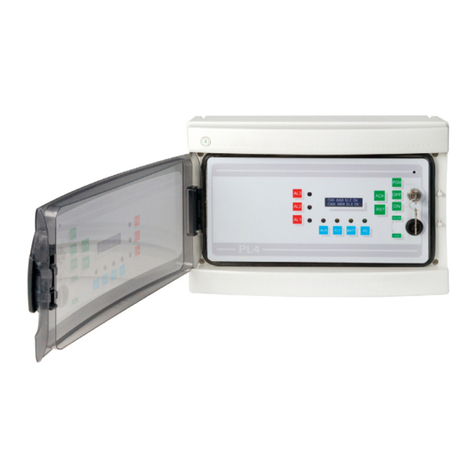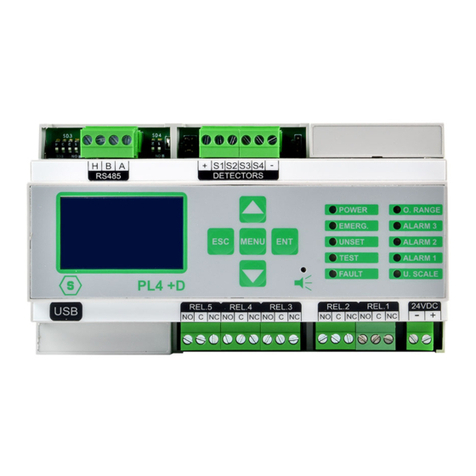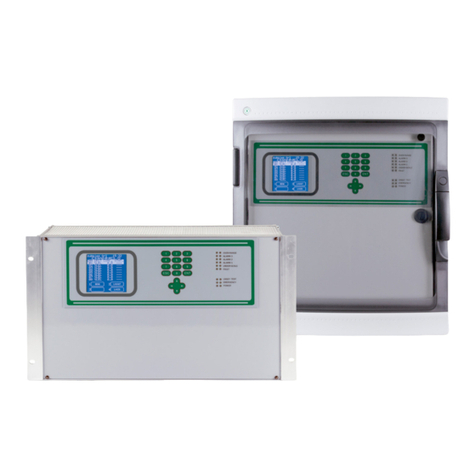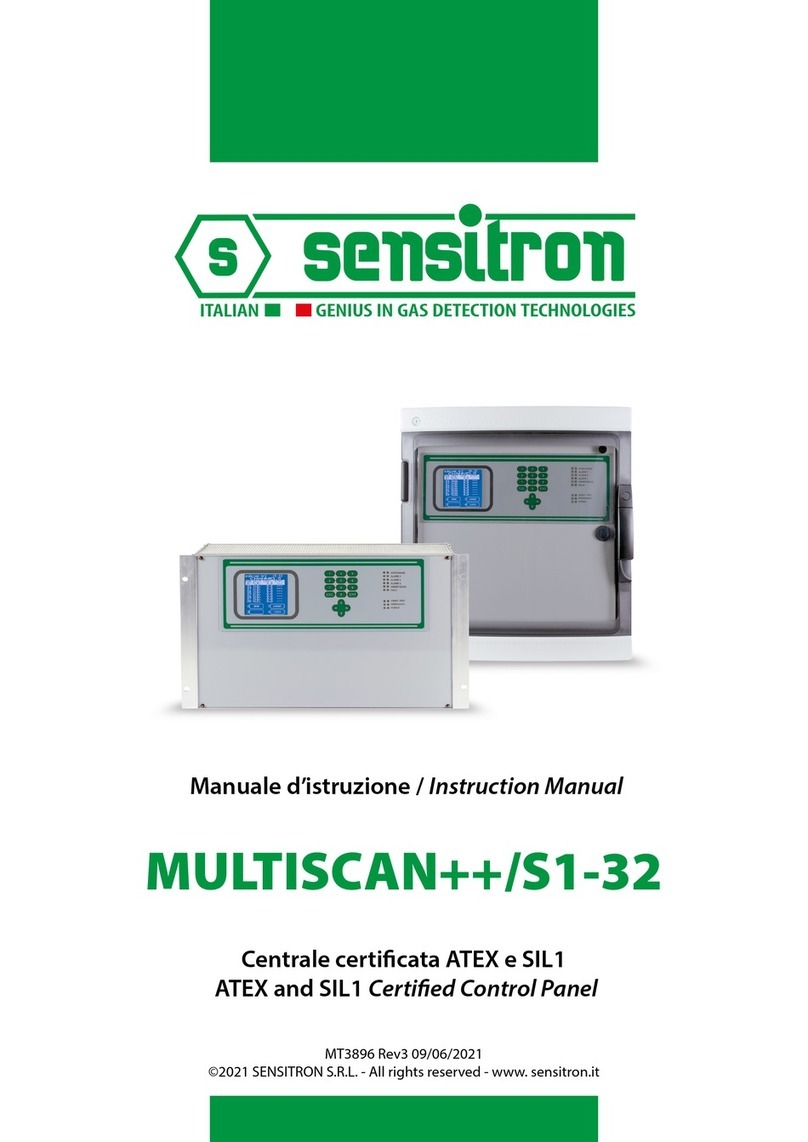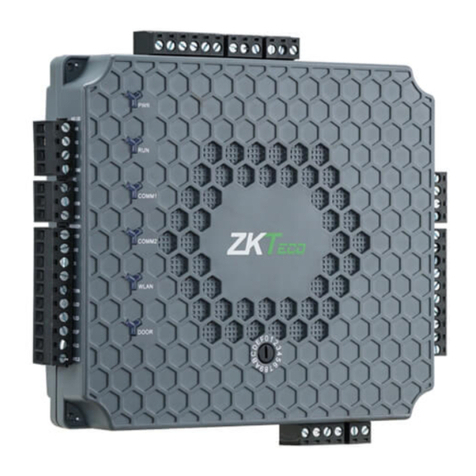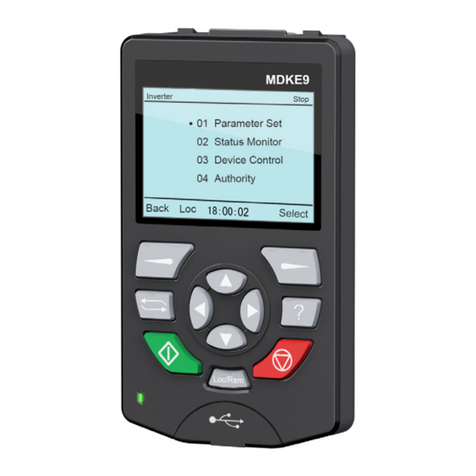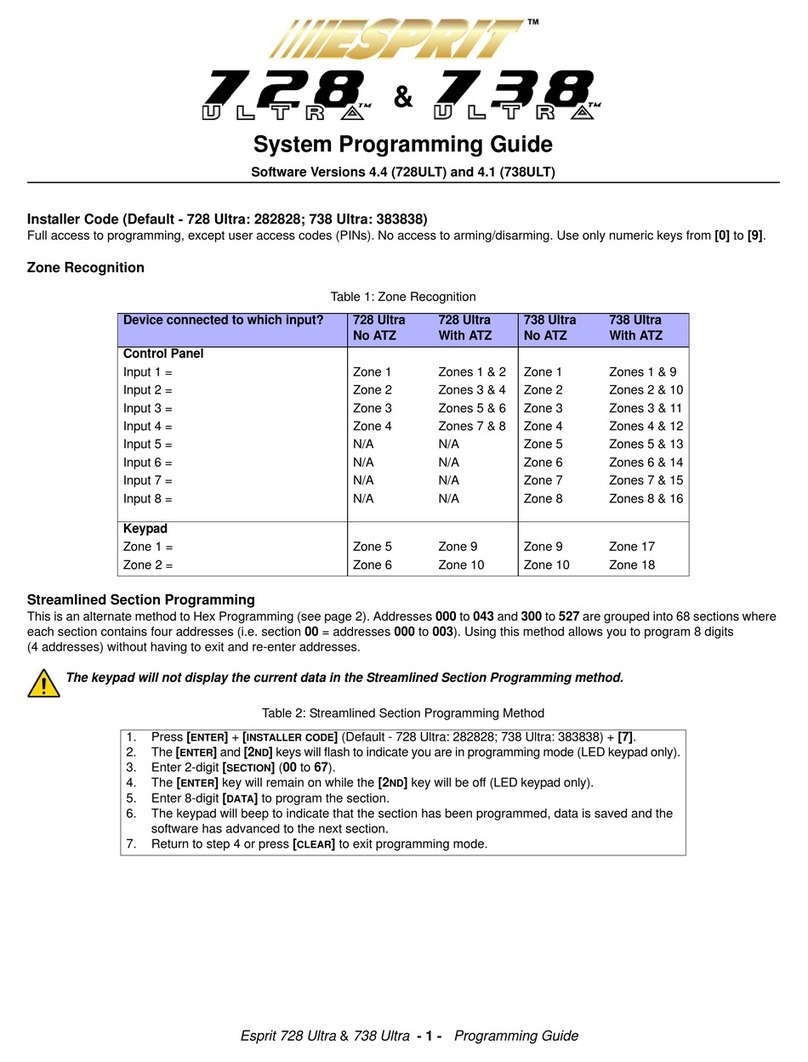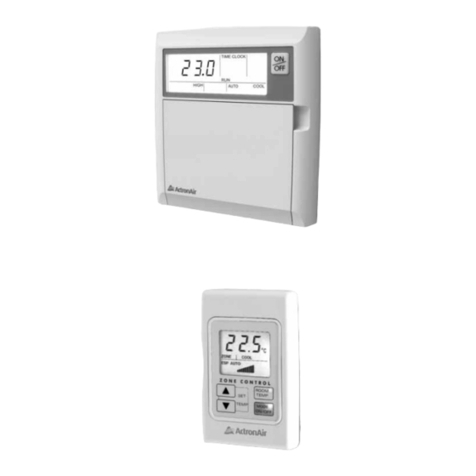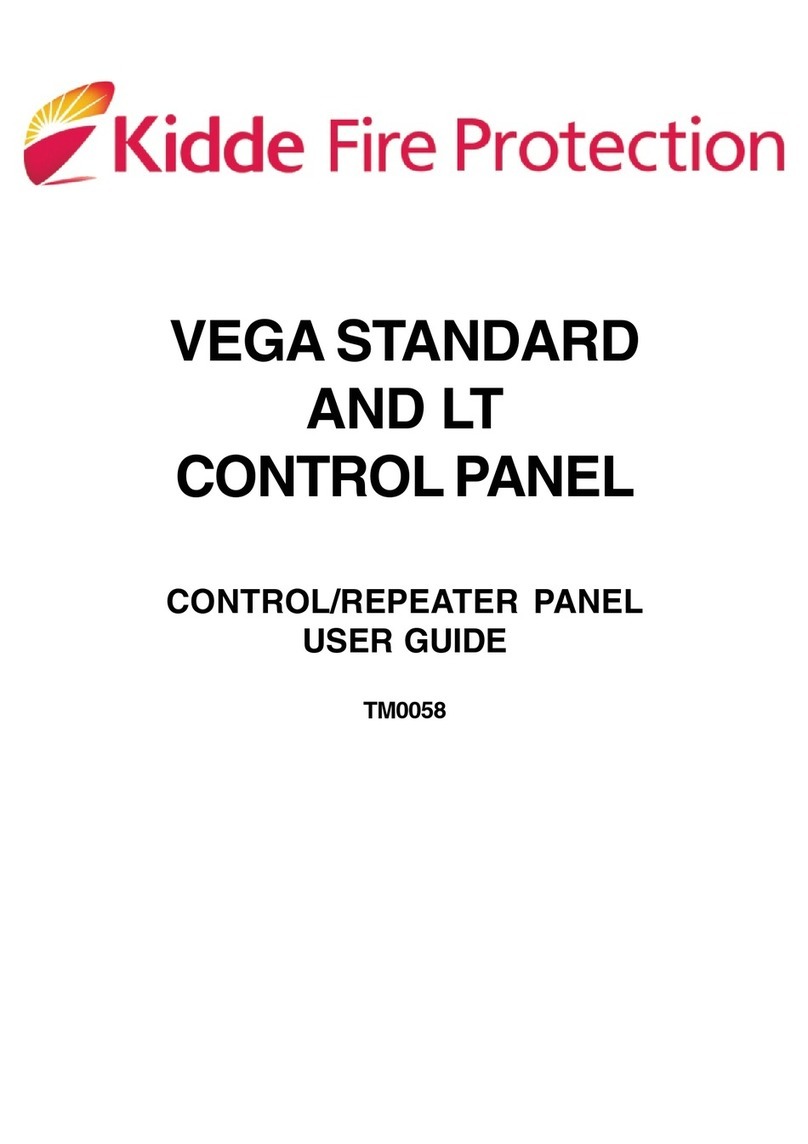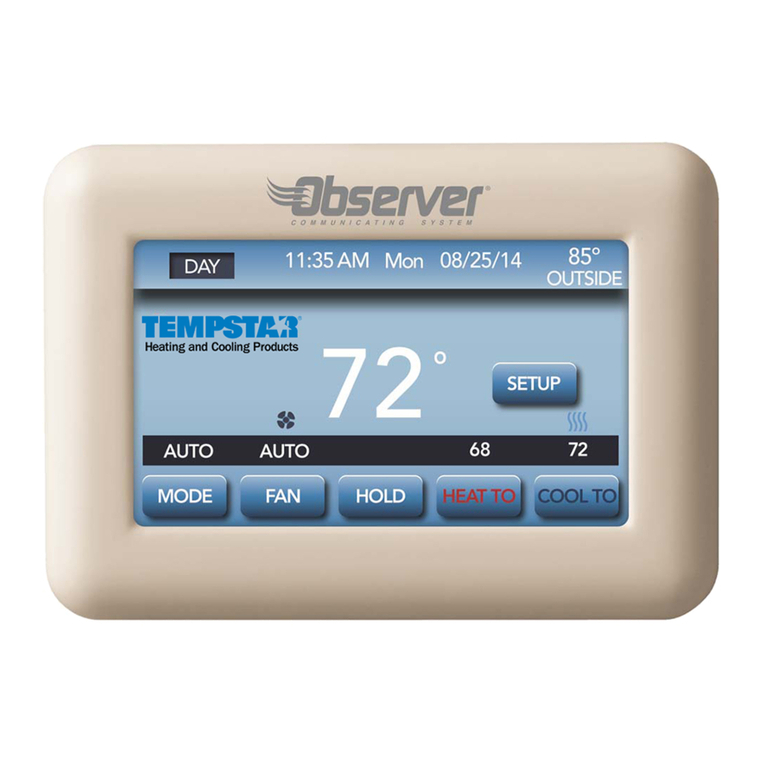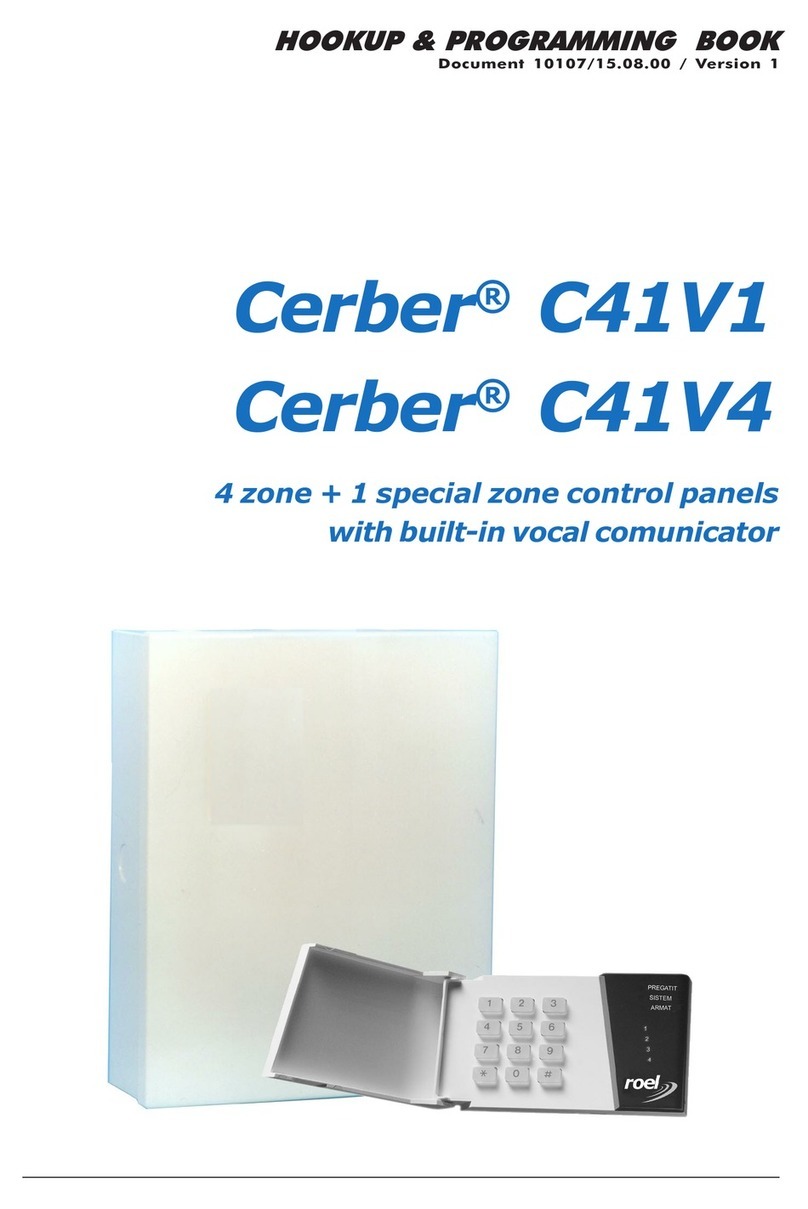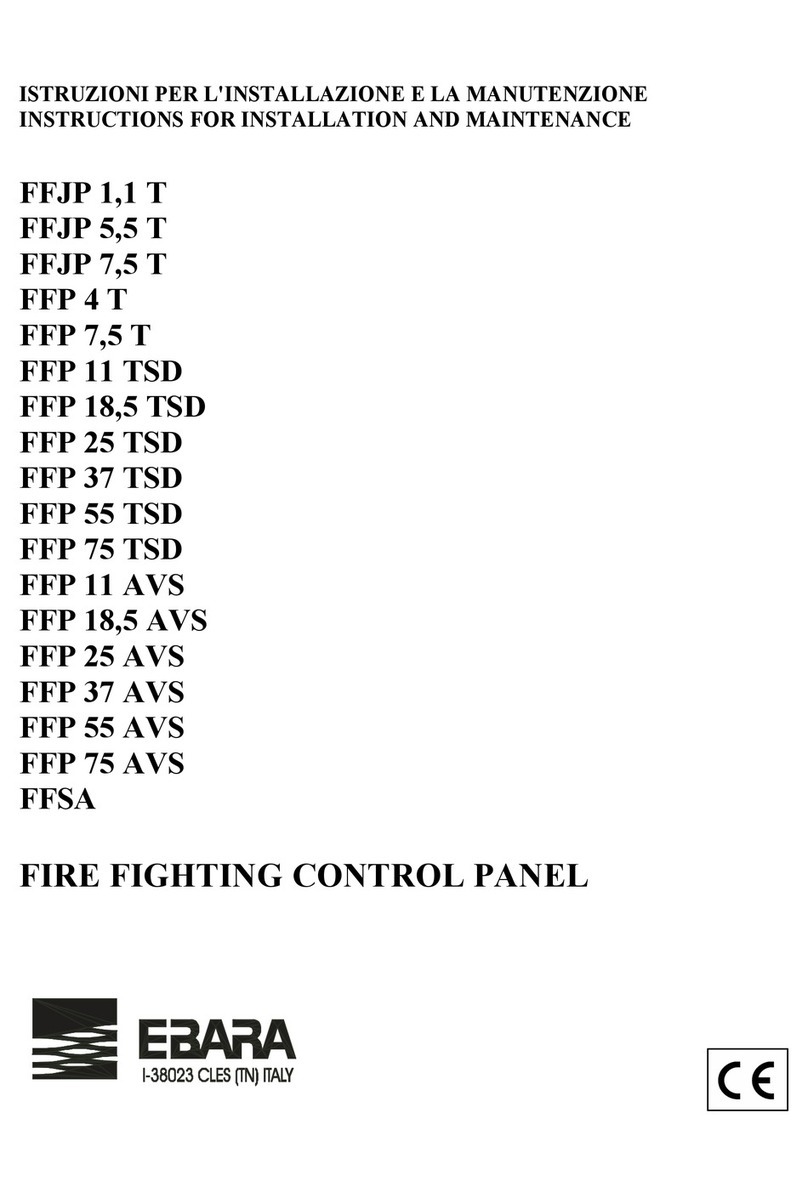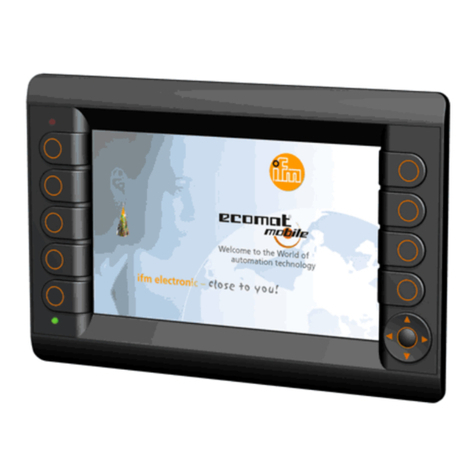Sensitron ST.PL4+ User manual

ST.PL4+
MANUALE D’INSTALLAZIONE ED USO
INSTALLATION AND USER MANUAL
SENSITRON S.r.l.
Viale della Repubblica, 48, 20010 CORNAREDO MI - ITALY
Tel: +39 02 93548155 Fax: +39 02 93548089
http://www.sensitron.it e-mail: [email protected]

MANUALE TECNICO – TECHNICAL HANDBOOK ST.PL4+
MT2770_rev2_PL4+.doc 10.11.2010 2 di 32

MANUALE TECNICO – TECHNICAL HANDBOOK ST.PL4+
MT2770_rev2_PL4+.doc 10.11.2010 3 di 32
INDICE INDEX
1.1 Caratteristiche tecniche .............................................................................................................7
1.1 Technical specification...............................................................................................................7
1.2 Fusibili........................................................................................................................................7
1.2 Fuses .........................................................................................................................................7
2.1 Fissaggio meccanico .................................................................................................................8
2.1 Mechanical fixing........................................................................................................................8
2.2 Layout Scheda Principale............................................................................................................9
2.2 Main board layout.......................................................................................................................9
2.2.1 SELEZIONE LINGUA .............................................................................................................10
2.2.1 LANGUAGE SELECTION........................................................................................................10
2.2.2 MORSETTIERE PER COLLEGAMENTO.....................................................................................11
2.2.2. CONNECTION TERMINAL BLOCKS..........................................................................................11
2.3 Modulo di espansione..............................................................................................................13
2.3 Expansion Module....................................................................................................................13
2.4 Self-Test...................................................................................................................................14
2.4 Self-Test...................................................................................................................................14
3.1 Alimentazione primaria (220Vca).............................................................................................15
3.1 Main power supply (220Vac) ...................................................................................................15
3.2 Collegamento rivelatori............................................................................................................15
3.2 Detectors connection ...............................................................................................................15
4.1 Il pannello frontale....................................................................................................................17
4.1 The front panel.........................................................................................................................17
4.2 Collegamento batteria e prima accensione .............................................................................18
4.2 Battery connection and first switching on ................................................................................18
4.3 Centrale inserita.......................................................................................................................18
4.3 SET mode................................................................................................................................18
4.4 Centrale in allarme...................................................................................................................19
4.4 Alarm condition ........................................................................................................................19
4.5 Centrale in guasto....................................................................................................................19
4.5 Fault condition..........................................................................................................................19
4.6 Centrale disinserita ..................................................................................................................20
4.6 UNSET mode...........................................................................................................................20
4.7 Centrale in modalità programmazione....................................................................................20
4.7 Programming mode..................................................................................................................20
4.8 Allarme batteria bassa.............................................................................................................20
4.8 Low battery alarm.....................................................................................................................20
4.9 Allarme over range...................................................................................................................21
4.9 Over range alarm.....................................................................................................................21
5.1 Esempio di programma-zione di un ingresso ..........................................................................23
5.1 Example of input channel programming..................................................................................23
5.2 Programmazione ingresso per rivelatore Ossigeno...................................................................26
5.2 Oxygen detector input channel programming..........................................................................26
5.3 MENU “TIMES”........................................................................................................................27

MANUALE TECNICO – TECHNICAL HANDBOOK ST.PL4+
MT2770_rev2_PL4+.doc 10.11.2010 4 di 32
5.3 "TIMES” menu..........................................................................................................................27
5.4 RESET parametri default (vers. firmware da 3.0)....................................................................28
5.4 Default conditions RESET (firmware release 3.0 on)..............................................................28

MANUALE TECNICO – TECHNICAL HANDBOOK ST.PL4+
MT2770_rev2_PL4+.doc 10.11.2010 5 di 32
Avvertenza
Warning
QUESTO MANUALE DEVE ESSERE LETTO
ATTENTAMENTE DA TUTTI COLORO CHE
HANNO O AVRANNO LA RESPONSABILITA'
DI INSTALLARE, UTILIZZARE O DI
PRESTARE UN SERVIZIO DI ASSISTENZA
SU QUESTO PRODOTTO.
THIS MANUAL MUST BE CAREFULLY READ
BY ALL PERSONS WHO HAVE OR WILL
HAVE THE RESPONSIBILITY FOR
INSTALLING, USING OR SERVICING THIS
PRODUCT.
Come ogni componente di un sistema, questo
prodotto funzionerà correttamente solo se
installato, utilizzato e controllato come
prescritto dal fabbricante.
IN CASO CONTRARIO, POTREBBE NON
FUNZIONARE CORRETTAMENTE E LE
PERSONE CHE AFFIDANO LA LORO
SICUREZZA A QUESTO PRODOTTO
POTREBBERO SUBIRE DANNI PERSONALI
O LETALI.
Like any equipment, this product will perform
as designed only if installed, used and
serviced in accordance with the manufacturer’s
instructions.
OTHERWISE, IT COULD FAIL TO PERFORM
AS DESIGNED AND PERSONS WHO RELY
ON THIS PRODUCT FOR THEIR SAFETY
COULD SUFFER SEVERE PERSONAL
INJURY OR DEATH.
La garanzia riconosciuta da Sensitron s.r.l. su
questo prodotto potrebbe essere nulla se il
prodotto non venisse installato, utilizzato e
controllato secondo le istruzioni fornite con il
presente manuale. Per favore, proteggetevi
seguendole attentamente.
The warranties made by Sensitron s.r.l. with
respect to this product are voided if the product
is not installed, used and serviced in
accordance with the instructions in this user
guide. Please protect yourself and others by
following them.
Invitiamo i nostri clienti a scriverci o a
chiamarci per ogni informazione riguardo
questo strumento, il suo uso o una sua
eventuale riparazione.
We recommend our customers to write or call
regarding this equipment prior to use or for any
additional information relative to use or repair.

MANUALE TECNICO – TECHNICAL HANDBOOK ST.PL4+
MT2770_rev2_PL4+.doc 10.11.2010 6 di 32
1 INTRODUZIONE 1 INTRODUCTION
La centrale di rivelazione gas PL4+, nella
configurazione base, può gestire fino a quattro
rivelatori con uscita proporzionale 4-20mA,
espandibili a otto con l’aggiunta di un modulo
opzionale.
La PL4+ accetta anche rivelatori d’ossigeno e
può monitorarne sia l’eccesso che il difetto.
Tuttavia, nel caso si debbano gestire rivelatori
di Ossigeno con altri tipi di rivelatori gas, si
consiglia di utilizzare una centrale PL4+
dedicata ai rivelatori di Ossigeno ed una
seconda per gli altri tipi di rivelatori; questo
perché i rivelatori di Ossigeno hanno delle
soglie di allarme impostate per la deficienza
mentre gli altri rivelatori hanno soglie in
incremento e vi sarebbe difficoltà nell’utilizzo
dei relè.
I valori di concentrazione misurati vengono
presentati su un display a cristalli liquidi retro-
illuminato presente sul frontale della centrale.
E’ possibile configurare ogni singolo ingresso
impostando sia il tipo di rivelatore, sia il campo
di misura, sia i valori delle soglie d’intervento
degli allarmi. La programmazione delle funzioni
è effettuata con il semplice uso dei tasti
presenti sul frontale della centrale.
Sono disponibili 5 uscite relè, di cui tre
associate alle soglie di intervento (AL 1, AL 2,
AL 3), una al guasto (FLT) e una è ausiliaria
(AUX) che può essere associata ad uno dei
tre stati di allarme o al guasto. Con l’aggiunta
del modulo opzionale di espansione, oltre
all’aggiunta di quattro zone supplementari,
sono implementate anche 16 uscite a Open-
Collector in sicurezza negativa, associate ad
AL 2 - AL 3 per tutte le otto zone.
The PL4+ gas control panel can manage 4
analogue 4-20mA gas detectors and can be
expanded to 8 by using an optional 4-zone
expansion module, easily connectable directly
in the control unit.
PL4+ accepts also Oxygen detectors and
manages both its enrichment and depletion.
In the event that Oxygen detectors should be
managed along with detectors for other types
of gas, we recommend to have a PL4+
dedicated to the Oxygen detectors and
another panel for the other detectors, in that
oxygen detectors might have alarm thresholds
set to monitor its depletion while the other
gases are monitored to control the increasing
contents in the atmosphere and this might
cause problems in the relay activation.
On the front panel, a backlit LC display shows
the values being measured.
Any single input configuration requires setting
the type of detector being used, the
measuring range and the alarm thresholds.
Functions programming is easily performed
through the push buttons on the front panel.
The control panel is equipped with 5 relays
and precisely, one for each alarm threshold
(AL1, AL2, AL3), one for fault (FLT) and an
auxiliary one (AUX) that can be associated to
any of the alarm status or fault.
By adding the optional 4-zone expansion
module, the panel gets 4 additional inputs and
16 Open-Collector outputs (negative safety)
that can be associated to AL2 – AL3 alarms of
each of the 8 inputs.

MANUALE TECNICO – TECHNICAL HANDBOOK ST.PL4+
MT2770_rev2_PL4+.doc 10.11.2010 7 di 32
1.1 Caratteristiche tecniche 1.1 Technical specification
Tensione alimentazione 220VcA +/- 10% Power supply 220Vac +/- 10%
Assorbimento a riposo 60mA (Tipico) Power consumption 60mA (Tipico – typical)
Ingressi in vers. base 4 Analog 4-20 mA Inputs (base version) 4 Analog 4-20 mA
Ampliabilità Ingressi 4 Analog 4-20 mA Input expansion 4 Analog 4-20 mA
Uscite in vers. Base Relè Aux, Al.1, Al.2, Al.3,
Fault Outputs (basic version) Relays Aux, Al.1, Al.2, Al.3,
Fault
Portata contatti relè 1A, 24 Vcc o 0,5A 120 Vcc
(AUX 10A 125 Vca o 5A
24 Vdc)
Contacts rating 1A, 24 Vdc or 0,5A 120 Vdc
(AUX 10A 125 Vac or 5 A
24 Vdc)
Ampliabilità Uscite 16 Open-Collector (AL 2 –
AL 3 per tutti gli 8 canali) Extended Outputs 16 Open-Collector (AL 2 –
AL 3 for the 8 channels)
Visualizz. LED Presenza Rete,
alimentazione a batt.
Uscita ausiliaria,
Pre-all 1, Pre-all 2, All. 3,
Guasto
LED indications Main power supply,
battery supply,
auxiliary output
Pre-al. 1, pre-al. 2, Alarm 3,
Fault
Display Display LCD Alfanumerico
a matrice di punti retro-
illuminato a LED 2 Righe x
16 Colonne..
Display Alphanumeric Dot Matrix
LCD Display with LED
Backlight 2 Rows x 16
Columns.
Unità di back up 12V 7A/h (Opzionale) Backup battery 12V 7A/h (Optional)
Temp. funzionamento 0-50 C° Operating temperature 0-50 C°
Umidità 15-85% non condensante Humidity 15-85% non condensing
Alloggiamento Box ABS IP65:
486 x 288 x 148 mm Housing ABS IP65 box:
486 x 288 x 148 mm
Conformità EMC Requisiti di emissioni:
EN 61000-6-3 (emissioni
classe B-limiti residenziali).
Requisiti di immunità:
TIPO 1 della EN50270.
EMC conformity Emission requirements:
EN 61000-6-3 (emission
class B–residential limits).
Immunity requirements:
TYPE 1 of EN 50270
Conformità ATEX II(2)G
EN60079-0:2006
EN60079-29-1:2007
ATEX conformity II(2)G
EN60079-0:2006
EN60079-29-1:2007
1.2 Fusibili 1.2 Fuses
F1 Fusibile di Rete 2A Rapido
F2 Fusibile di Batteria 2A Rapido
FU4 Fusibile di Rete 630 mA ritardato
F1 Main supply fuse 2A Fast
F2 Battery fuse 2A Fast
FU4 Main supply fuse 630mA Timed

MANUALE TECNICO – TECHNICAL HANDBOOK ST.PL4+
MT2770_rev2_PL4+.doc 10.11.2010 8 di 32
2 INSTALLAZIONE 2 INSTALLATION
2.1 Fissaggio meccanico 2.1 Mechanical fixing
Prima di collegare la centrale leggere
attentamente e seguire le istruzioni qui di
seguito riportate.
Before installing the control panel, read and
strictly follow the instructions detailed here
below.
Aprire il pannello frontale della centrale
ruotando la serratura su UNLOCK.
Scollegare il morsetto CN10 che collega i cavi
d'alimentazione della scheda al trasformatore
sul fondo del box; scollegare anche il morsetto
CN9 per il collegamento della batteria.
Richiudere il pannello frontale girando la
serratura su LOCK.
Togliere le 4 viti poste a lato del pannello e
rimuovere la parte frontale della centrale.
Ora è possibile forare la custodia posteriore per
consentire l'entrata dei cavi.
Raccomandiamo di eseguire l'entrata dei cavi
preferibilmente nella parte inferiore, utilizzando
un pressacavo idoneo IP65 per poter
mantenere lo stesso grado di protezione della
centrale.
Fissare la parte posteriore della centrale a
parete mediante le staffe di fissaggio riportate
in figura.
UNLOCK the control panel front door and open
it.
Disconnect the CN10 terminal, which connects
the power supply wires from the main PCB to
the transformer on the back side of the box,
and the CN9 terminal for the battery
connection.
Close the front door and LOCK it again.
Unscrew the four screws placed close to the
panel and remove it.
Now it is possible to drill the rear panel to allow
the cables entrance.
We would recommend having cables entering
from the lower side.
Make sure you are using an adequate IP65
rated cable gland to assure the box ingress
protection is not compromised.
Wall fix the rear panel through the mounting
brackets detailed in the picture.
353,00
314,00 mm
mm
444,00 mm
223,00 mm
Non è necessario eseguire fori
nel box
It is not required to make any
hole in the box

MANUALE TECNICO – TECHNICAL HANDBOOK ST.PL4+
MT2770_rev2_PL4+.doc 10.11.2010 9 di 32
Se l'installazione prevede il collegamento di
una batteria tampone, collegare i cavetti alla
batteria e fare attenzione di alloggiarla nella
parte superiore sinistra, sopra la barra di
metallo, come illustrato qui sotto.
If the installation requires the connection to a
back up battery, connect the wires to the
battery side and place the battery in the upper
left side, just above the metal bar, as shown in
the picture here below.
Riposizionare il pannello frontale tramite le 4
viti rimosse in precedenza.
Girare su UNLOCK, aprire lo sportello frontale
e ricollegare i morsetti CN10 (alimentazione) e
CN9 (batteria).
Fasten the front panel by using the 4 screws
you previously removed.
UNLOCK the front door and connect again the
terminals CN10 (power supply) and CN9
(battery).
Procedere con il collegamento dei rivelatori
come descritto nei capitoli seguenti. Proceed with the gas detectors connection as
described in the following chapters
2.2 Layout Scheda Principale 2.2 Main board layout
La figura rappresenta la scheda montata sul
retro dello sportello frontale, su cui dovranno
essere effettuati i cablaggi dei rivelatori.
The above figure shows the PCB mounted on
the rear side of the front door, to which gas
detectors are to be connected.
TERMINAL BLOCK FOR THE EXPANSION
8 INPUTS MODULE
Batteria/battery
SCHEDA MICROPROCESSORE (PIGGY)
CON ETICHETTA DELLA VERSIONE SOFTWARE.
MICROPROCESSOR BOARD (PIGGY) WITH
SOFTWARE VERSION LABEL.
BUZZER
JP3
JP1
uP
KEY SELECTOR
CHIAVE
1
28
7
JP3 PONTICELLI PER SELEZION
E
LINGUA DISPLAY
JP3 LANGUAGE SELECTOR JUMPERS.
CN8A CN8B
CN1 CN2 CN3 CN4
RL1
1 2 3 4 1 2 3 4 1 2 3 4 1 2 3 4 1 2 3
CN7
RL5
RL2 RL3 RL4
1 2 3 4 5 6 7 8 1 2 3 1 2 3
CN5 CN9 CN10
JP1 JP2 JP3 JP4
NA NC NA NC NA NC NA NC
F2 F1F3

MANUALE TECNICO – TECHNICAL HANDBOOK ST.PL4+
MT2770_rev2_PL4+.doc 10.11.2010 10 di 32
2.2.1 Selezione Lingua 2.2.1 Language Selection
E’ possibile selezionare la lingua in cui
visualizzare i messaggi sul display LCD,
tramite due ponticelli sul connettore JP3
installato sulla scheda (PIGGY) del
Microcontroller in base al seguente schema:
JP3 7-8 JP3 5-8 Lingua Selezionata
ON ON Inglese
ON OFF Spagnolo
OFF ON Portoghese
OFF OFF Inglese
ON = Ponticello Chiuso.
OFF = Ponticello Aperto.
Oppure seguendo il seguente topografico:
It is possible to select the language for the
messages being displayed, via two jumpers on
the JP3 connector mounted on the
Microprocessor board (PIGGY) as per the
following scheme:
JP3 7-8 JP3 5-8 Selected Language
ON ON English
ON OFF Spanish
OFF ON Portuguese
OFF OFF English
ON = Jumper Closed.
OFF = Jumper Open.
Or following the layout here below:
JP3
uP
1
28
7
1
28
7
1
28
7
1
28
7
JP3
JP3
JP3
PIGGY
SPAGNOLO
SPANISH
PORTOGHESE
PORTOGUESE
INGLESE
ENGLISH
INGLESE
ENGLISH
I due ponticelli sono acquisiti dal software una
sola volta all’accensione della PL4.
Per cambiare la lingua occorre prima spegnere
la centrale, cambiare le impostazioni dei due
ponticelli e riaccendere la centrale.
N.B. Il ponticello nella posizione JP3 1-2,
non deve mai essere cambiato o rimosso.
The two jumpers are software accepted just
once at the PL4+ start up.
To change the language, you need first to
switch the panel off, change the jumper settings
and then switch the panel on again.
N.B.: never change or remove the jumper
JP3 1-2.

MANUALE TECNICO – TECHNICAL HANDBOOK ST.PL4+
MT2770_rev2_PL4+.doc 10.11.2010 11 di 32
2.2.2 Morsettiere per collegamento 2.2.2. Connection terminal blocks
CN1, CN2, CN3, CN4 sono le morsettiere
di collegamento dei rivelatori. Nel dettaglio
CN1 (zona 1), CN2 (zona 2), CN3 (zona 3),
CN4 (zona 4).
CN1, CN2, CN3, CN4 represent the
detectors connecting terminal blocks, and
more precisely: CN1 (zone1), CN2 (zone
2), CN3 (zone 3), CN4 (zone 4).
MORSETTI DESCRIZIONE TERMINALS DESCRIPTION
1 Non utilizzare 1 NOT to be used
2 SEGNALE 4-20 Ma 2 4-20mA signal
3 POSITIVO (+ 12 Vdc) 3 Positive (+12Vdc)
4 NEGATIVO (-12 Vdc) 4 Negative (-12Vdc)
CN5 è la morsettiera di uscita dei 4 relè
presenti sulla scheda, in particolare:
CN5 is the output terminal block of the 4
relays to be found on the card, and
precisely:
MORSETTI USCITA SCAMBIO
RELE’ (CONTATTO
PULITO)
TERMINALS RELAY OUTPUTS
(CHANGEOVER
CONTACTS)
1 - 2 Allarme 1 (AL1) 1 - 2 Alarm 1 (AL1)
3 - 4 Allarme 2 (AL2) 3 - 4 Alarm 2 (AL2)
5 - 6 Allarme 3 (AL3) 5 - 6 Alarm 3 (AL3)
7 - 8 Guasto (FLT) 7 - 8 Fault (FLT)
La scelta del contatto relè normalmente aperto
(NA), o normalmente chiuso (NC) è eseguita
tramite quattro jumpers (JP1 a JP4) in
relazione al relè (JP1 per il relè RL1), come da
figura.
The choice of a normally open relay (NA) or a
normally closed one (NC) is carried out by four
jumpers (jp1 to jp4) according to the relay (JP1
corresponds to RL1) as shown in the picture.
N.B. L’indicazione NA e NC sui jumpers dei
relè è da intendersi con centrale PL4+ non
alimentata. A centrale alimentata ed in
condizione normale (assenza di allarmi e/o
guasti) i relè sono eccitati e quindi i contatti
sono rovesciati rispetto a quello impostato con
i jumpers.
NOTE: The indication NA and NC on the
jumpers, shown in the picture below, is valid
with the control panel switched OFF. With the
PL4+ control panel switched ON (in normal
operation but without any Alarm or Fault) the
relays are normally energized so that the
output contacts are reversed with respect to
the indication below.

MANUALE TECNICO – TECHNICAL HANDBOOK ST.PL4+
MT2770_rev2_PL4+.doc 10.11.2010 12 di 32
CN7 è l’uscita del relè ausiliario
(segnalazione luminosa sul frontale AUX) CN7 represents the auxiliary relay output
(the AUX lamp on the front panel)
Morsetto CN7 CN7 terminal
1 NA - Normalmente Aperto 1 NA - Normally Open
2 NC - Normalmente Chiuso 2 NC - Normally Closed
3 C - Comune 3 C - Common
CN10 è la morsettiera d’alimentazione in
alternata dal trasformatore. Su questa linea è
presente il fusibile F1.
CN10 represents the AC supplying terminal
board from the transformer. The protection
fuse is F1.
CN8A-CN8B sono connettori a pettine, per il
modulo espansione delle 4 zone + 16 uscite
aggiuntive. Fare molta attenzione
all’inserimento del modulo e controllare che
tutti i piedini siano inseriti correttamente. Sul
connettore CN8A si inserisce il connettore
CN16A della scheda espansione e sul CN8B
il connettore CN16B della scheda
espansione.
CN8A-CN8B are connectors for the
expansion module of the 4 inputs + 16
additional outputs. Be careful while
introducing the module, check that all the
pins are properly inserted, that is to say not
folded outside the connector; verify that the
CN8A connector coincide with the CN16A
(expansion module), and that the CN8B
coincide with the CN16B (expansion
module).

MANUALE TECNICO – TECHNICAL HANDBOOK ST.PL4+
MT2770_rev2_PL4+.doc 10.11.2010 13 di 32
2.3 Modulo di espansione 2.3 Expansion Module
CN12, CN13, CN14, CN15 sono le
morsettiere di collegamento dei rivelatori
aggiuntivi. Nel dettaglio: CN12 (zona 5),
CN13 (zona 6), CN14 (zona 7), CN15 (zona
8).
CN12, CN13, CN14, CN15 represent the
terminal boards where additional detectors
are to be connected. More precisely: CN12
(zone 5), CN13 (zone 6), CN14 (zone 7),
CN15 (zone 8).
Sul connettore CN17 sono presenti i segnali
delle 16 uscite Open-Collector. Le uscite
Open-Collector sono per l’allarme 2 e
l’allarme 3 di ciascun ingresso rivelatore.
N.B.: Le uscite Open-Collector non sono
memorizzate e seguono lo stato
d'allarme del rivelatore: quando il valore
misurato ridiscende al di sotto del valore
della soglia, l'uscita Open-Collector si
ripristina automaticamente.
On CN17 connector, 16 Open-Collector
outputs are pre-programmed.
Open-Collectors are associated to the 2nd
and 3rd alarm threshold of each input.
N.B.: The Open-Collector outputs follow
the alarm status of the detector: they
are not latched and as soon as that the
alarm level goes below the alarm set
point, the Open-Collector output is
automatically restored.
CONNETTORE CN17
CN 17 CONNECTOR
Pin Soglia 2
Pin Threshold 2
3Zona 1 Allarme 2 3Zone 1 Alarm 2
5Zona 2 Allarme 2 5Zone 2 Alarm 2
7Zona 3 Allarme 2 7Zone 3 Alarm 2
9Zona 4 Allarme 2 9Zone 4 Alarm 2
11 Zona 5 Allarme 2 11 Zone 5 Alarm 2
13 Zona 6 Allarme 2 13 Zone 6 Alarm 2
15 Zona 7 Allarme 2 15 Zone 7 Alarm 2
17 Zona 8 Allarme 2 17 Zone 8 Alarm 2
1-2 Diodi protezione 1-2 Protection diode

MANUALE TECNICO – TECHNICAL HANDBOOK ST.PL4+
MT2770_rev2_PL4+.doc 10.11.2010 14 di 32
Pin Soglia 3
Pin Threshold 3
4Zona 1 Allarme 3 4Zone 1 Alarm 3
6Zona 2 Allarme 3 6Zone 2 Alarm 3
8Zona 3 Allarme 3 8Zone 3 Alarm 3
10 Zona 4 Allarme 3 10 Zone 4 Alarm 3
12 Zona 5 Allarme 3 12 Zone 5 Alarm 3
14 Zona 6 Allarme 3 14 Zone 6 Alarm 3
16 Zona 7 Allarme 3 16 Zone 7 Alarm 3
18 Zona 8 Allarme 3 18 Zone 8 Alarm 3
19-20 -V Comune alimentazione 19-20 -V Common power supply
2.4 Self-Test 2.4 Self-Test
Il Software della PL4+ esegue periodicamente
un Self-Test dei principali componenti interni
del Microprocessore, attivando le segnalazioni
visive e acustiche che fanno parte della
funzione di sicurezza.
Il Self-Test è eseguito una volta ogni ora e
verifica il corretto funzionamento delle funzioni
principali del microprocessore.
Inoltre vengono attivati tutti i LED sul pannello
frontale e il Buzzer.
La durata del Self-Test è al massimo di due
secondi.
Se il Self-Test va a buon fine, la Centrale
ritorna nello stato precedente, disattivando il
buzzer e spegnendo i LED che erano
precedentemente spenti.
Se il Self-Test non va buon fine, ovvero se il
microprocessore si guasta, il display visualizza
un messaggio di errore, attivando il LED di
Fault e il BUZZER in modo intermittente (0,5
sec. ON, 0,5 sec. OFF).
Il danno del microprocessore è la condizione di
guasto più grave poiché non consente al
sistema di essere operativo.
La centrale resta bloccata in questo stato ed
occorre chiamare l'assistenza tecnica al più
presto.
Il Self-Test non è eseguito quando la Centrale
è in Programmazione (Chiave su PGM).
PL4+ Software is programmed to periodically
carry out a Self-Test routine of the
Microprocessor's main components, by
activating visual and acoustic warnings being
part of the safety functions.
The Self-Test takes place once an hour to
verify the correct working of the
Microprocessor's main functions.
Besides that, all LEDs on the front panel and
the buzzer get activated.
The Self-Test routine lasts for maximum two
seconds.
Once the Self Test routine is completed, if
everything is correct, the panel gets back to
the state it was before the Self Test started, by
switching off the buzzer and the LEDs.
If the Self Test is not successful, i.e. if the
microprocessor fails, an error message is
displayed, the Fault LED turns on, while the
BUZZER emits an intermittent acoustics
warning (0.5 sec. ON, 0.5 sec. OFF).
The microprocessor failure is the worst fault
condition as this does not allow the system to
be operative.
The panel gets blocked in this Fault status and
it is required to call immediately for a technical
service.
The Self Test routine can't be performed while
the panel is in Programming mode (key switch
on PGM).

MANUALE TECNICO – TECHNICAL HANDBOOK ST.PL4+
MT2770_rev2_PL4+.doc 10.11.2010 15 di 32
3 COLLEGAMENTI 3 CONNECTIONS
Collegamento
Alimentazione
Main power
supply connection
(230 Vac)
Trasformatore
Trasformer
Resistenza di fine linea
(per canali non utilizzati)
End of Line resistances
(For unused channels)
Fusibile
Fuse
Interno centrale Internal view
3.1 Alimentazione primaria
(220Vca) 3.1 Main power supply
(220Vac)
Collegare alla morsettiera dell’alimentatore il
cavo tripolare di rete (minimo 1.5mm2per ogni
polo) e serrarlo con l’apposito fermacavo.
Prima di alimentare la centrale, collegare i
rivelatori alla scheda principale ed all’eventuale
interfaccia d’espansione.
Connect a three-wire cable (1.5mm2 minimum
for each pole) to the main supply terminal
board and fix it by using the suitable cable
fastener.
Before supplying voltage to the system,
connect all detectors to the main card and to
the expansion interface, if any.
3.2 Collegamento rivelatori 3.2 Detectors connection
La centrale può supportare, nella sua massima
espansione, fino ad otto rilevatori proporzionali
4-20 mA (uno per ingresso). Il rivelatore deve
essere collegato alla centrale con un cavo
3x0,75mm2schermato con la calza collegata a
terra solo dal lato centrale.
La distanza massima tra il rivelatore e la
centrale non deve superare i 100m. Verificare
che ogni rivelatore sia alimentato con almeno
12 Vdc
This system is able to support 8 detectors 4-
20mA (1 each input) in its maximum
expansion. Gas detector is to be connected to
the control unit by means of a 3x0.75 mm2
shielded cable (the shield must be grounded
only on the control unit side).
The maximum distance between the detector
and the panel should not exceed 100 mt.
Please make sure that every detector gets at
least 12Vdc.

MANUALE TECNICO – TECHNICAL HANDBOOK ST.PL4+
MT2770_rev2_PL4+.doc 10.11.2010 16 di 32

MANUALE TECNICO – TECHNICAL HANDBOOK ST.PL4+
MT2770_rev2_PL4+.doc 10.11.2010 17 di 32
4 CARATTERISTICHE
TECNICHE 4 TECHNICAL
SPECIFICATIONS
4.1 Il pannello frontale 4.1 The front panel
Sul frontale sono presenti segnalazioni
luminose che indicano: On the front panel, status LED's are present
to indicate:
(AL 1) Allarme Soglia 1
(AL 2) Allarme Soglia 2
(AL 3) Allarme Soglia 3
(FLT) Guasto
(AUX) Attivazione Relè ausiliario
(BATT) Funzionamento a batteria
(AC) Funzionamento a 220 VAC
(AL 1) Alarm 1
(AL 2) Alarm 2
(AL 3) Alarm 3
(FLT) Fault
(AUX) Auxiliary relay activation
(BATT) Battery operation
(AC) 220 VAC operation
Sono presenti due tasti che assumono varie
funzioni in base alla condizione in cui si trova
la centrale:
(ACK) Tacitazione
(RST) Ripristino impianto
Two push buttons are also available and their
functions change according to the operational
mode the control unit has been set to:
(ACK) Acknowledge
(RST) System reset
La PL4+ presenta tre diverse modalità di
funzionamento, definite dal posizionamento
del selettore a chiave:
PL4+ control unit offers three operational
modes defined by the key switch positioning:
(ON) Centrale Inserita
(OFF) Centrale Disinserita
(PGM) Centrale in Programmazione
(ON) System ON
(OFF) System OFF
(PGM) System in programming mode

MANUALE TECNICO – TECHNICAL HANDBOOK ST.PL4+
MT2770_rev2_PL4+.doc 10.11.2010 18 di 32
4.2 Collegamento batteria e
prima accensione 4.2 Battery connection and
first switching on
Portare la chiave in posizione OFF e
alimentare la centrale
Collegare ai cavetti rosso e nero
dell’alimentatore una batteria tampone da
12V 7Ah max, alloggiandola nella centrale
avendo cura di fissarla in modo stabile.
Si accenderà il LED di RETE e la centrale
si porrà in attesa per circa un minuto per
permettere ai rivelatori collegati di uscire
del preriscaldamento.
Dopo il tempo d’attesa, si accenderà il led
di FAULT (senza attivare il relativo relè), il
buzzer suonerà e la centrale mostrerà sul
display, lo stato dei primi due canali.
Il tasto ACK consentirà lo spegnimento del
buzzer.
La centrale è ora pronta per essere
programmata in base alle proprie esigenze.
Turn the key to the OFF position and power
the Control unit.
Connect to the red and black wires of the
power supply unit, a 12V 7Ah max LD
buffer battery and place it in the control unit
paying attention to fix it steadily.
The main power supply LED (AC) will light
up while the control unit will enter a standby
mode for nearly one minute to allow the
connected detectors to finish their pre-
heating phase.
Once this standby period is over the FAULT
LED will light up (without activating the
corresponding relay), the buzzer will sound
and the display will show the state of the
first two channels.
The button ACK can be used to turn the
buzzer sound off.
The control unit is now ready to be
programmed according to the user's needs.
Attenzione: In configurazione iniziale sono
attivati tutti i primi 4 canali.
Se vengono collegati meno di 4 rivelatori,
trascorso il tempo d’attesa, la centrale
segnalerà un Fault con attivazione del relativo
relè. Bisogna entrare in programmazione per
disabilitare i canali non utilizzati.
Viceversa, se sono connessi inizialmente più di
4 rivelatori tramite la scheda d’espansione, la
centrale configurata inizialmente per 4 canali
non li vedrà attivi, per cui bisogna entrare in
programmazione per attivarli.
Warning: As a standard configuration, all four
channels are activated.
After the standby period, should less than 4
detectors be connected, the control unit will
signal a FAULT condition and the first relay will
activate. It is necessary to enter the program
mode to disable the non-used channels.
On the other side, when more than 4 detectors
are connected via the extension module, being
the control unit programmed to be connected to
4, you will need to enter in program mode to
activate the corresponding channels.
4.3 Centrale inserita 4.3 SET mode
Chiave su ON – E’ lo stato di normale
funzionamento della centrale: i Rivelatori sono
acquisiti e le uscite sono gestite normalmente.
KEY SWITCH in ON position. - This is the
normal operating mode: input signals are
coming from the detectors and relay outputs
are managed regularly.
Sul display è visualizzato lo stato di due
rivelatori, uno per riga.
Apparirà Chn1: e Chn2:, seguiti dalla
concentrazione letta, dal fondo scala impostato
e dallo stato del canale (OK, A1, A2, A3, FT).
Il tasto ACK, tenuto premuto per circa due
secondi, consente lo scrolling dei canali inseriti.
The display shows the status of two detectors,
one each line.
It will appear Chn1: and Chn2: followed by the
concentration being read, the set full-scale and
the channel status (OK, A1, A2, A3, FT).
Keep the ACK button pushed for a couple of
seconds to scroll to the other channels being
used.

MANUALE TECNICO – TECHNICAL HANDBOOK ST.PL4+
MT2770_rev2_PL4+.doc 10.11.2010 19 di 32
4.3 Centrale in allarme 4.4 Alarm condition
Quando uno o più rivelatori supera una delle
soglie d’allarme impostate, la centrale dà una
segnalazione ottico/acustica e attiva il buzzer.
La scritta OK sul display cambia di stato
passando a A1, A2 e A3, visualizzando lo stato
del sensore. Le segnalazioni luminose sul
frontale si accenderanno indicando anch'esse
lo stato di A1, A2 e A3, attivando il relè
associato alla soglia.
Quando lo stato di allarme rientra, l'indicazione
sul display ritornerà OK, mentre quelle sul
frontale rimarranno attive fino al reset manuale
da parte dell'operatore.
Il tasto ACK consente di Tacitare l’allarme
sonoro, spegnendo il buzzer.
Ogni volta che viene superato un livello
d’allarme il buzzer si attiva, richiedendo la
tacitazione manuale.
Subito dopo la tacitazione, il tasto ACK
riprende la funzione di scrolling dei canali,
tenendolo premuto per circa due secondi.
Quando l’allarme rientra perché il rivelatore
non sente più la presenza di gas, la centrale
permette di resettare gli allarmi e le
segnalazioni luminose sul frontale che indicano
la massima soglia d’allarme raggiunta. Per
eseguire questa procedura, portare la chiave in
posizione OFF e premere il tasto RST.
Ricordarsi poi di riposizionare la chiave in ON e
reinserire così la centrale.
When one or more detectors exceed the preset
thresholds, the control unit activates an
acoustic warning.
The OK message on the display changes into
A1, A2 and A3 showing the detector's real time
reading. The front panel LEDs will light up to
indicate A1, A2 and A3 as well and the
associated relay activates.
When the alarm is over, the display message
will show OK, while the LEDs will require a
manual reset by the operator.
Press ACK push button to silence the buzzer.
Any time a threshold has been exceeded, the
buzzer activates and a manual reset will
always be necessary to silencing it.
Once the buzzer has been muted, the ACK
button can be used again to get the channels
scrolling again, by keeping it pushed for two
seconds.
When the alarm condition has been removed
and gas is no longer detected, it is possible to
reset both alarms and visual indications that
show the highest concentration attained.
To reset the system turn the Key to OFF
position, then press RST.
Always remember to turn the key switch to ON
position to restart the unit.
4.4 Centrale in guasto 4.5 Fault condition
Quando uno o più canali rilevano un guasto
(taglio della linea, guasto del sensore etc.), la
centrale dà un'indicazione ottico/acustica
attivando il buzzer e accendendo il LED FLT
sul frontale; contemporaneamente si attiva il
relè associato al guasto.
Il tasto ACK ci consente di Tacitare l’allarme
sonoro, spegnendo il buzzer.
Subito dopo la tacitazione, il tasto ACK
riprende la funzione di scrolling dei canali,
tenendolo premuto per circa due secondi.
Quando il guasto rientra, è possibile resettare
lo stato di guasto e le segnalazioni luminose
sul frontale. Per eseguire questa procedura,
portare la chiave in posizione OFF e premere il
tasto RST. Ricordarsi poi di riposizionare la
chiave in ON e reinserire così la centrale.
When one or more channels enter a Fault
condition (sensor damaged or open circuit due
to a line interruption) the buzzer activates and
the FLT LED on the front panel lights up.
Contemporaneously, the relay associated to
the fault status activates too.
To silence the buzzer press ACK.
Once the buzzer has been muted, the ACK
button can be used to get the channels
scrolling again, by keeping it pushed for two
seconds.
When the Fault condition has been removed, it
is possible to reset both alarm and light
indications. To reset the system turn the Key to
OFF position, then press RST.
Always remember to turn the key switch back
to ON position to restart the unit.

MANUALE TECNICO – TECHNICAL HANDBOOK ST.PL4+
MT2770_rev2_PL4+.doc 10.11.2010 20 di 32
4.5 Centrale disinserita 4.6 UNSET mode
Chiave su OFF e LED FLT acceso – In questo
stato i rivelatori sono acquisiti e gestiti a display
normalmente, ma le uscite relè non sono
attivate.
Sul display è visualizzato lo stato di due
rivelatori, uno per riga. Apparirà Chn1: e Chn2:,
seguiti dalla concentrazione letta, dal
fondoscala impostato e dallo stato del canale
(OK, A1, A2, A3, FT).
Quando uno o più rivelatori, supera una delle
soglie d’allarme impostate, la centrale dà una
segnalazione ottico/acustica attivando il buzzer
e accendendo il led sul frontale corrispondente
alla soglia raggiunta, senza attivare alcun relè.
Il tasto ACK ci consente di Tacitare l’allarme
sonoro, spegnendo il buzzer.
Il tasto ACK, tenuto premuto per circa due
secondi, consente lo scrolling dei canali inseriti.
KEY SWITCH in OFF position. This is the
UNSET mode. The signals coming from the
detectors are managed but the relay outputs
are not activated.
The display shows the status of two detectors,
one on each line. It will appear Chn1: and
Chn2: followed by the concentration readout,
the set full-scale and the channel status (OK,
A1, A2, A3, FT).
When one or more detectors exceed the preset
thresholds, the control unit emits an acoustic
warning while the LED corresponding to that
alarm threshold lights up without activating
the relay .
Press ACK push button to silence the buzzer.
Once the buzzer has been muted, keep the
ACK button pushed for two seconds to get the
channels scrolling again.
4.6 Centrale in modalità
programmazione 4.7 Programming mode
Chiave su PGM e LED FLT acceso.
In questo stato la centrale non gestisce più il
campo, ma si predispone per la
riconfigurazione dei parametri, come descritto
nel prossimo capitolo.
Per segnalare all’operatore che la Centrale si
trova in modo Programmazione PGM, se non
si premono tasti, la centrale emette un breve
beep ogni 10 secondi.
Key switch on PGM position and FLT LED on.
The control unit doesn’t manage inputs or
outputs but allows all parameters to be
configured, as described in the next chapter.
To warn and remind the user that the panel is
in programming mode (PGM), should no
buttons be pushed the panel emits a beep
sound every 10 seconds.
4.7 Allarme batteria bassa 4.8 Low battery alarm
In condizione di funzionamento a batteria, se la
tensione della stessa scende sotto il limite di
sicurezza, la centrale segnala un guasto con
indicazione luminosa BATT e FLT ed
attivazione del relè associato. Sulla prima linea
del display apparirà la scritta BATTERY LOW.
Dopo aver ripristinato le condizioni ideali di
funzionamento, ACK e RST riportano la
centrale in condizioni normali.
When the control unit is battery operated and
the battery's voltage decreases below the
safety limit, the control unit shows this status
by the BATT and FLT LED illumination and the
corresponding relay activation. On the display
the message BATTERY LOW will appear.
Once the correct working conditions have been
restored, ACK and RST will reset the unit.
Table of contents
Other Sensitron Control Panel manuals
Popular Control Panel manuals by other brands
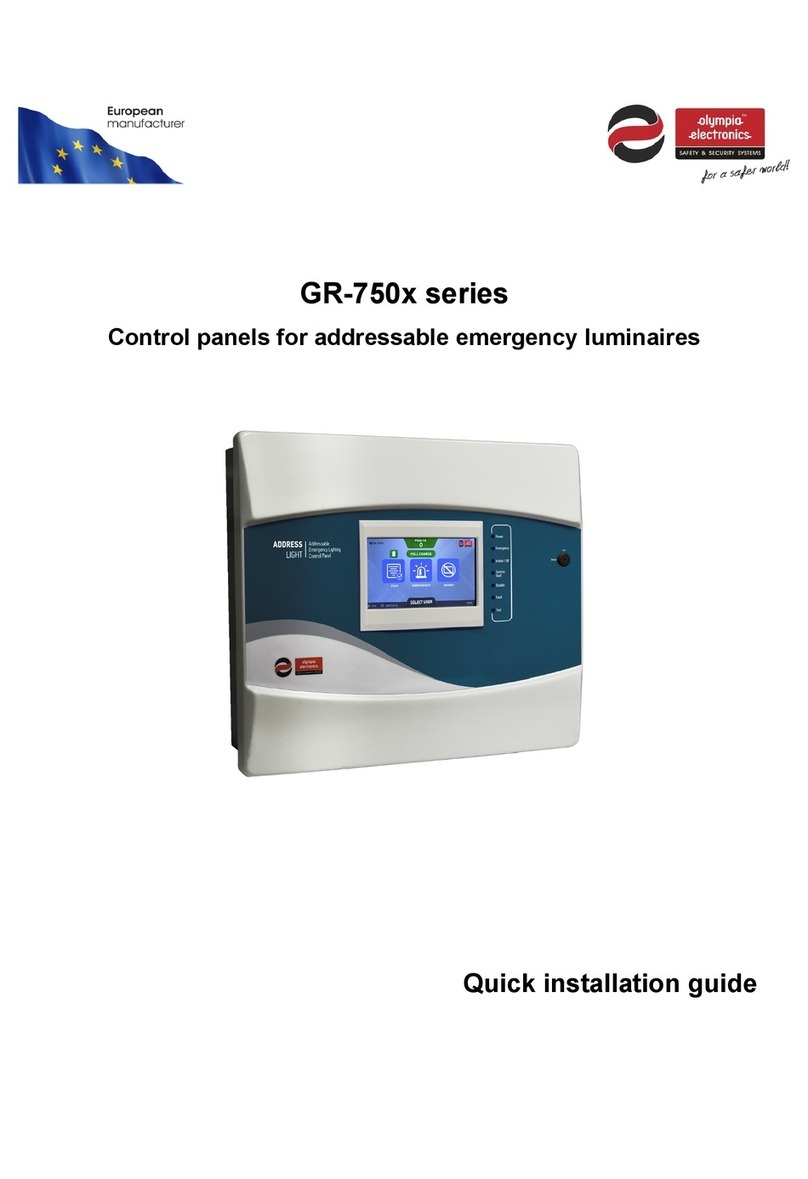
olympia electronics
olympia electronics GR-750 Series Quick installation guide
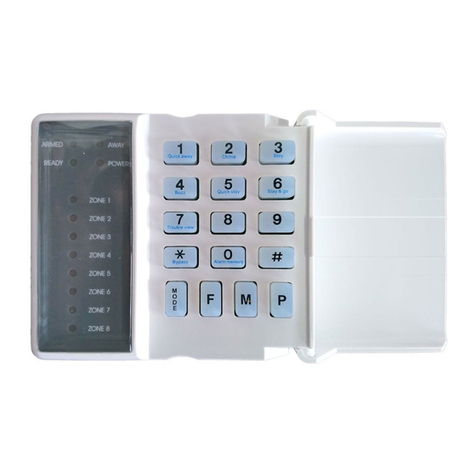
IDS
IDS 805 Training manual
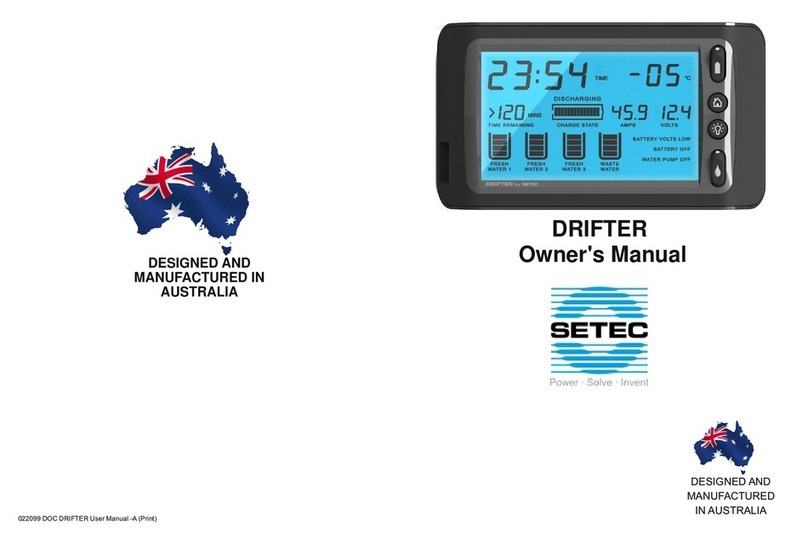
Setec
Setec DRIFTER owner's manual
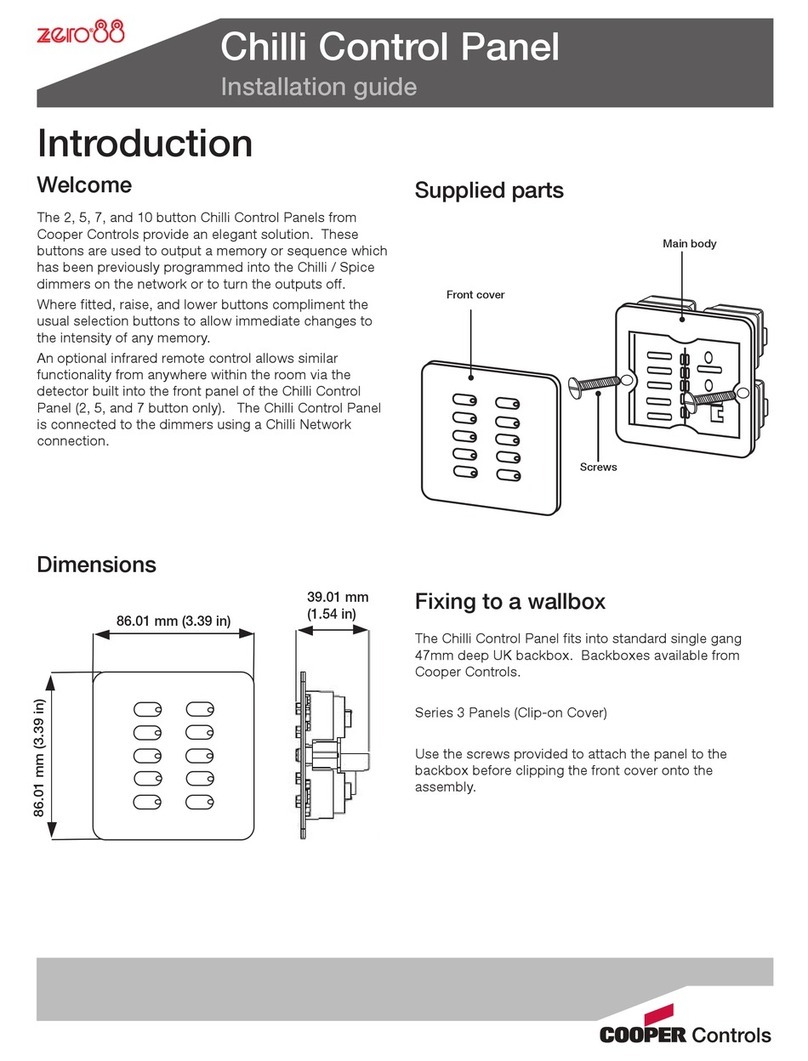
Cooper Controls
Cooper Controls 2 Chilli Control Panel installation guide
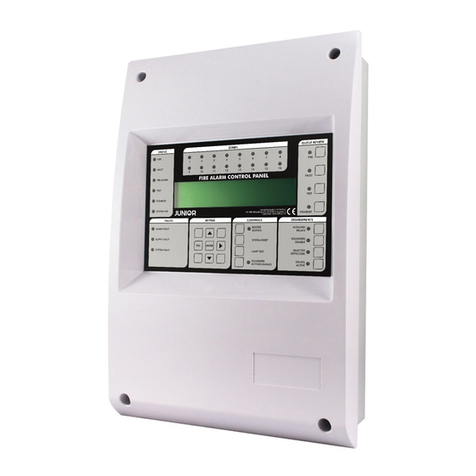
Global Fire Equipment
Global Fire Equipment Junior V4 Operation & maintenance manual
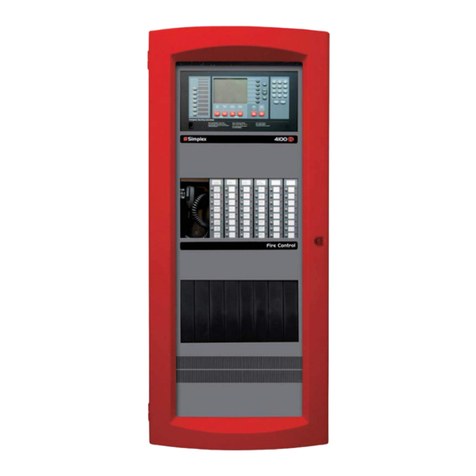
Simplex
Simplex MINIPLEX 4100ES Series manual
